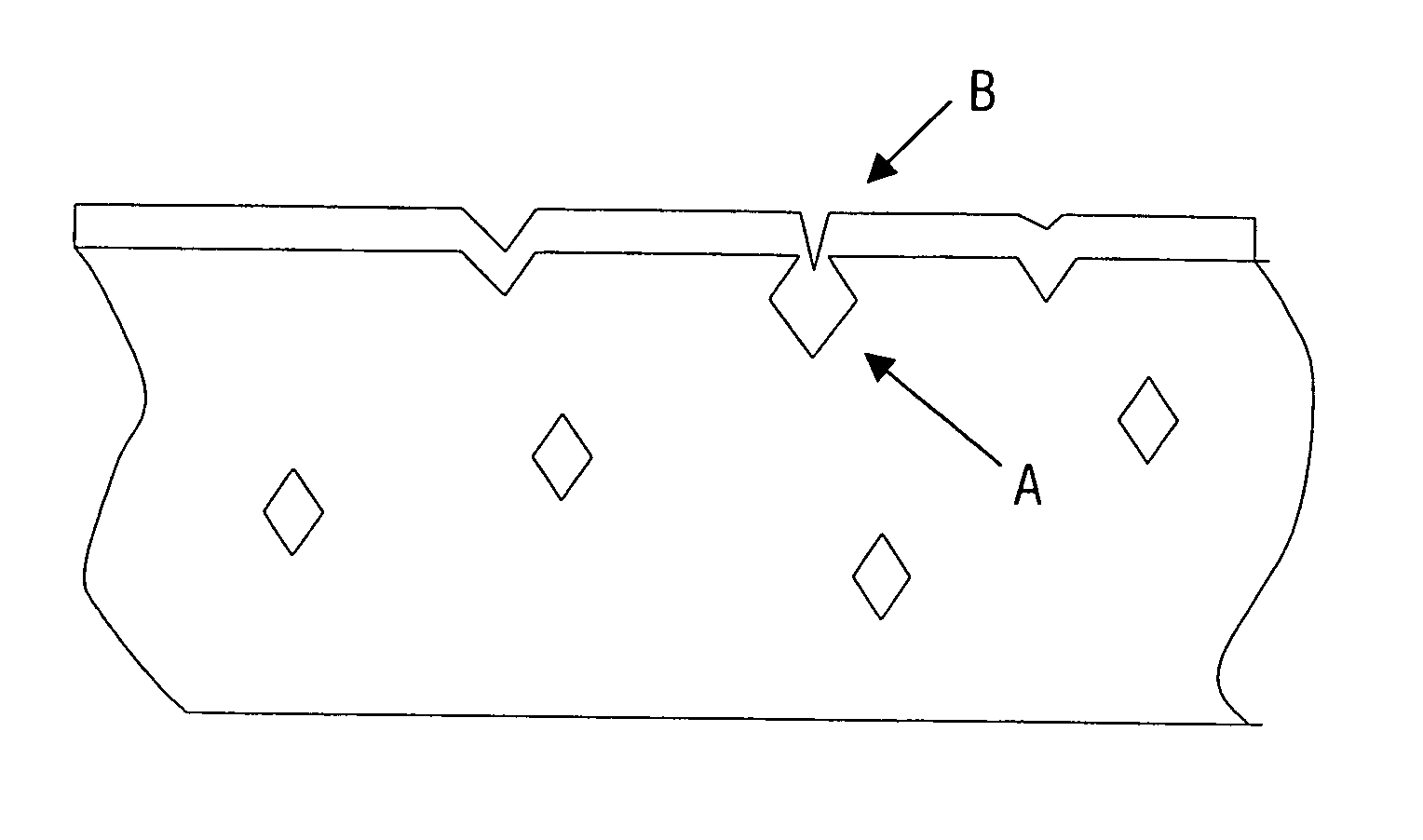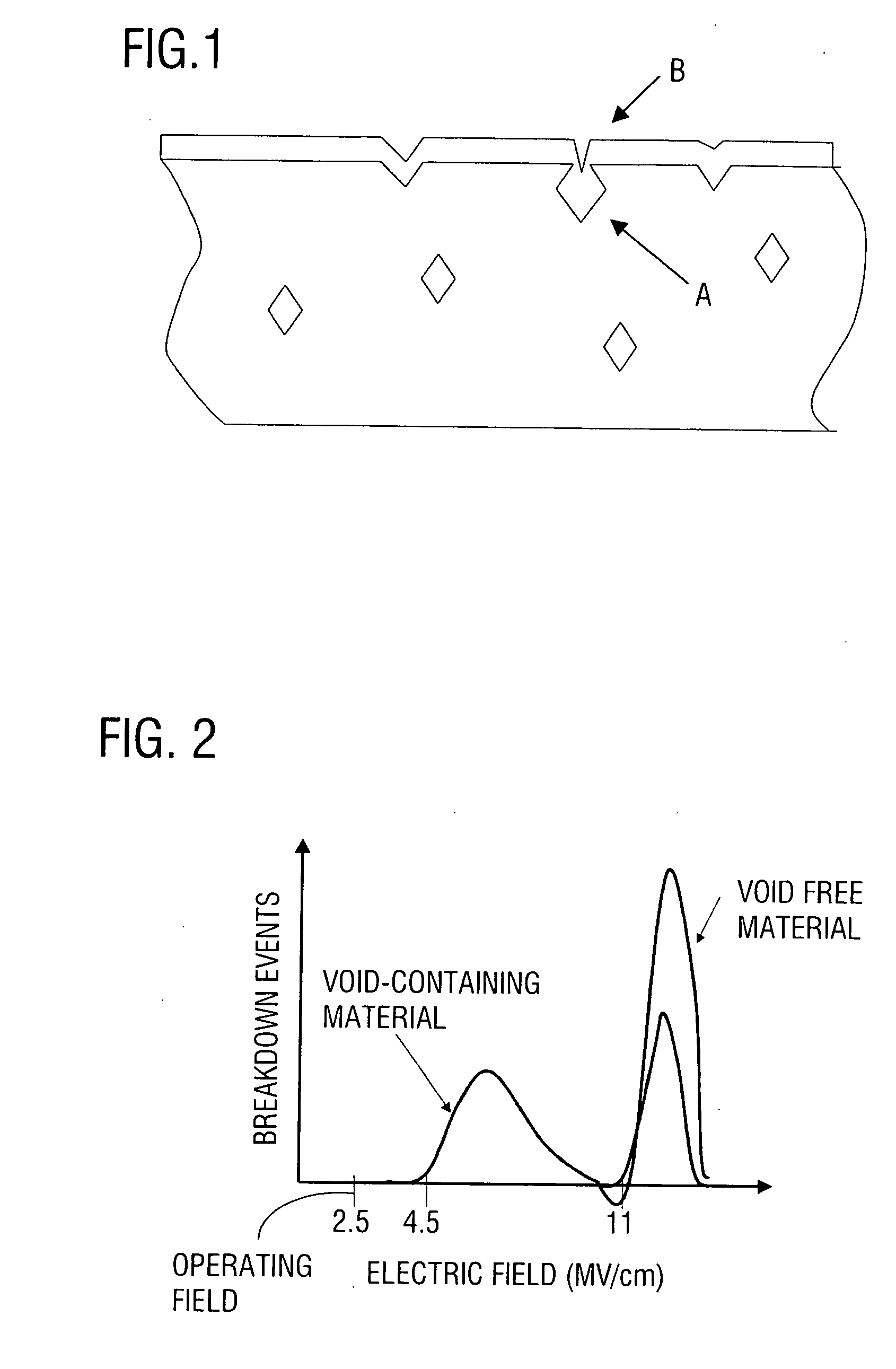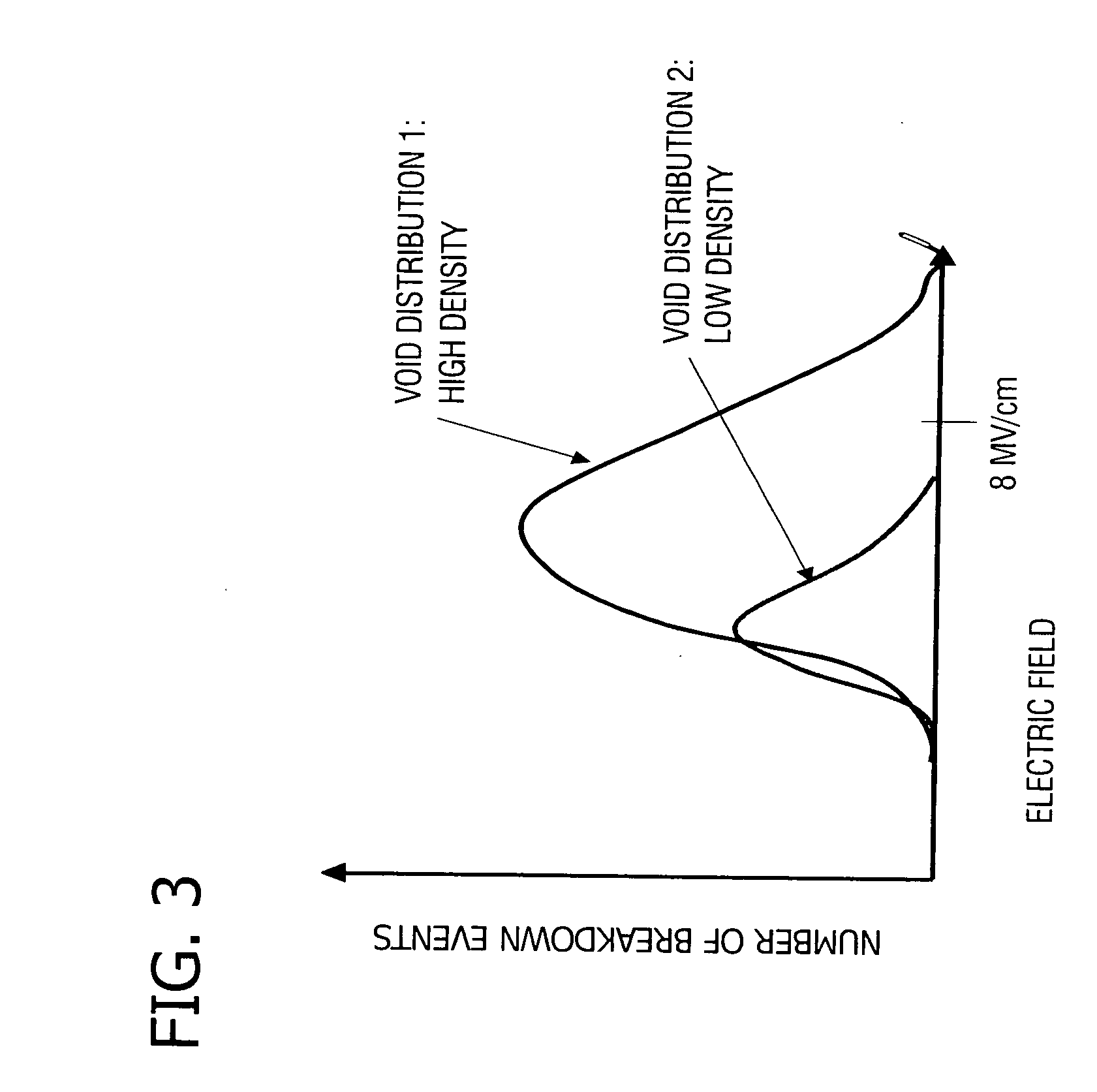Process for preparing single crystal silicon having improved gate oxide integrity
a single crystal silicon and integrity technology, applied in the field of single crystal silicon ingot preparation, can solve the problems of high production cost, high production cost, and inability to produce single crystal silicon of acceptable quality, and achieve the highest possible pull rate, improve gate oxide integrity, and maximize throughput and yield
- Summary
- Abstract
- Description
- Claims
- Application Information
AI Technical Summary
Benefits of technology
Problems solved by technology
Method used
Image
Examples
Embodiment Construction
[0038] Based upon experimental evidence to-date, it appears that presently accepted practices for determining gate oxide integrity in single crystal silicon wafers are inaccurate and, as a result, lead to the disposal and therefore waste of wafers which would otherwise be acceptable for use. More specifically, gate oxide integrity requirements are typically presented in terms of a percent failure at a given electrical field, a field which is substantially greater than the field at which the integrated circuit will be operated (e.g., 2×, 3×, 4×, etc. the operating field). As further explained below, such tests can and, it is now believed, do result in the rejection of material which is acceptable for use. This waste is primarily the result of a test which erroneously leads to the conclusion that a few, large agglomerated defects in a given wafer are preferable to a number of, in comparison, relatively small defects.
[0039] Accordingly, the present invention enables more wafers to be ...
PUM
| Property | Measurement | Unit |
|---|---|---|
| diameter | aaaaa | aaaaa |
| average radius | aaaaa | aaaaa |
| length | aaaaa | aaaaa |
Abstract
Description
Claims
Application Information
 Login to View More
Login to View More - R&D
- Intellectual Property
- Life Sciences
- Materials
- Tech Scout
- Unparalleled Data Quality
- Higher Quality Content
- 60% Fewer Hallucinations
Browse by: Latest US Patents, China's latest patents, Technical Efficacy Thesaurus, Application Domain, Technology Topic, Popular Technical Reports.
© 2025 PatSnap. All rights reserved.Legal|Privacy policy|Modern Slavery Act Transparency Statement|Sitemap|About US| Contact US: help@patsnap.com



